If you are looking for a small tree that can suit your home space or landscape, there are many magnolia species that you can consider.
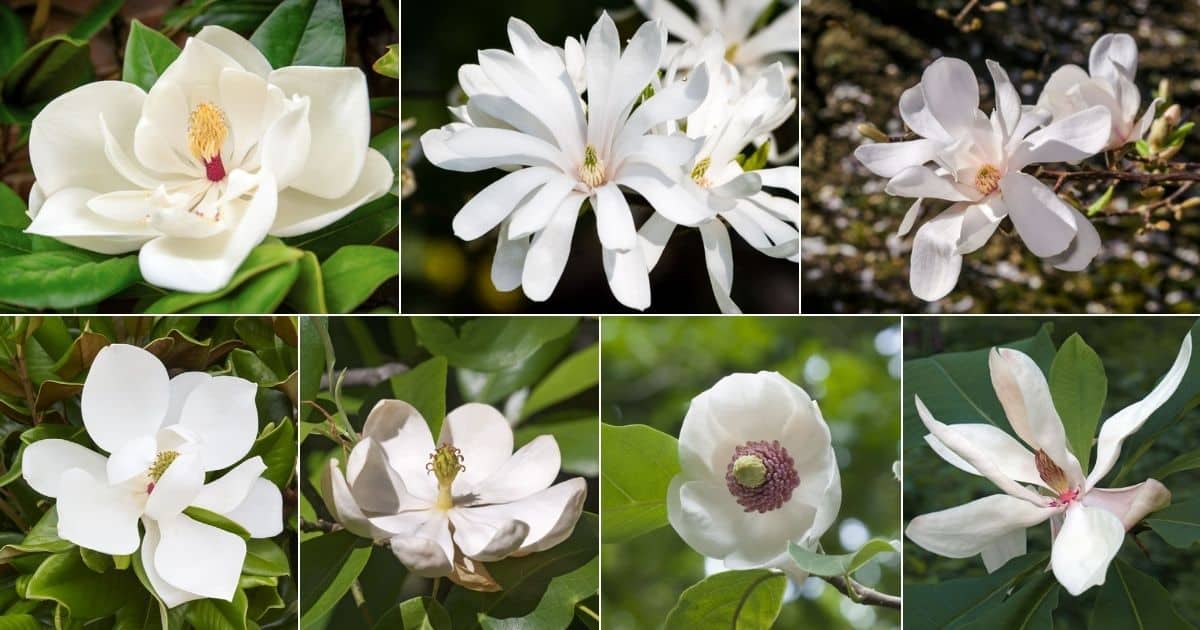
If you also prefer the idea of growing a magnolia tree but are considering one that can brighten the area. We have provided a list of some of the most common white magnolia varieties you can choose from.
Let’s get started!
Jump to:
- What Is Magnolia Plant?
- Common White Magnolia Varieties
- 1. Southern Magnolia (Magnolia grandiflora)
- 2. Baby Doll (magnolia Grandiflora' Baby Doll')
- 3. Southern Magnolia' Saint Mary's
- 4. Cucumber Magnolia (Magnolia acuminata)
- 5. Bigleaf Magnolia (Magnolia macrophylla)
- 6. 'Centennial Blush' Star Magnolia (Magnolia stellata)
- 7. Baby Grand (magnolia grandiflora ‘Strgra’)
- 8. Chinese magnolia (Magnolia soulangeana)
- 9. Sweetbay Magnolia (Magnolia virginiana)
- 10. Kobus Magnolia (Magnolia Kobus)
- 11. Colossus (Magnolia sieboldii ‘Colossus’)
- 12. Southern magnolia 'Mainland.'
- 13. 'Royal Star' White Magnolia
- 14. Cylindrical Magnolia (Magnolia cylindrica)
- 15. Fairy Magnolia White
- 16. Gail's Favorite (Magnolia laevifolia 'Gail's Favorite')
- 17. Anise Magnolia (Magnolia salicifolia)
- 18. Loebner Magnolia (Magnolia loebneri)
- Conclusion
What Is Magnolia Plant?
Magnolia is a gorgeous and elegant flowering plant of many types and species (around 210 them). A native of Southeast Asia and North America, the plant has increasingly become popular on almost all continents.
However, it is a plant associated with a warm climate, like in the southern climates. But you can grow its deciduous types in almost any region around the U.S. Magnolia plant has several different sizes that come in various flower shapes and colors, the most popular of which is white.
Despite its exotic appearance, the magnolia is easy to care for and is deer and disease-resistant. It produces flowers from April to June and contributes significantly to bees' pollination. Although the magnolia plant has different colors, we'd be focusing on the white magnolia varieties for this article.
Common White Magnolia Varieties
1. Southern Magnolia (Magnolia grandiflora)
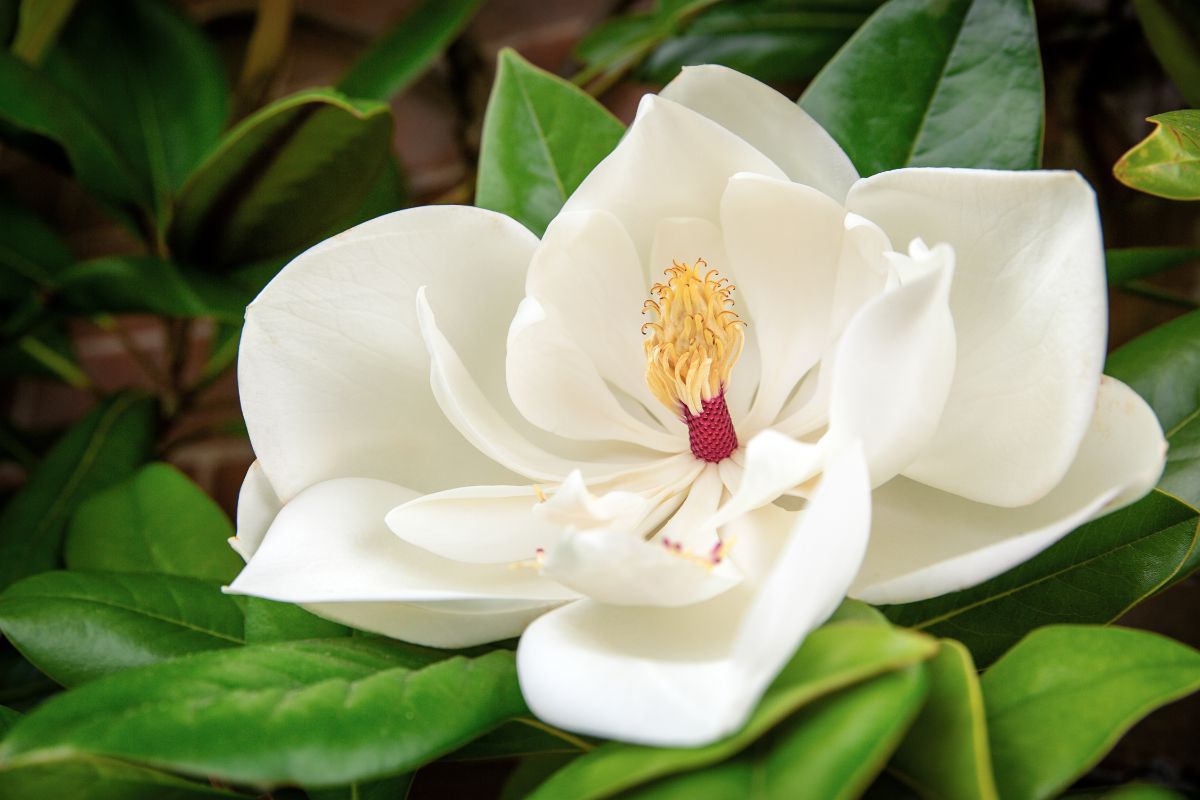
The southern magnolia variety comes first because it is arguably the most legendary. It is a popular tall variety that can reach 40 to 80 feet, growing a canopy as large as 40 to 50 feet. It produces white-colored blooms.
It possesses dark green, bright leaves characterized by its evergreen nature, even though they tend to drop during colder periods. Magnolia grandiflora is hardy in zones 7 to 9 outdoors and prefers a full sun spot. This popular plant will start small at around 8 to 12 feet but grow rapidly into a giant frame and is best planted during spring.
2. Baby Doll (magnolia Grandiflora' Baby Doll')
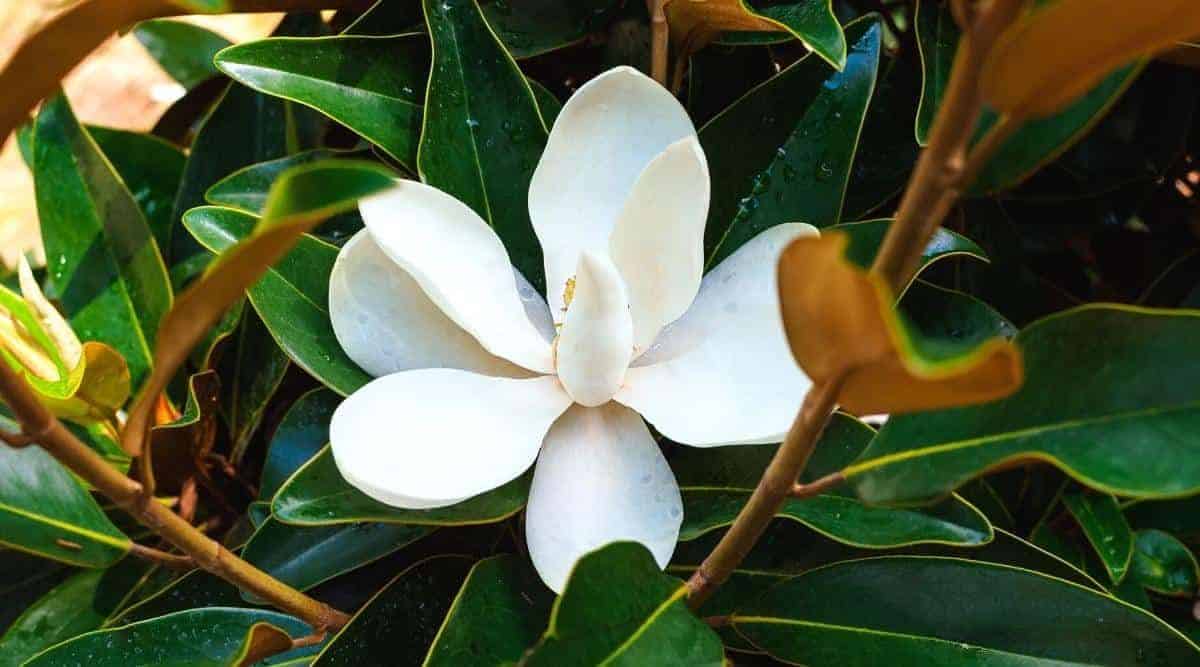
Baby dolls are often confused with southern magnolia due to their similar features. This variety possesses a pyramidal growth habit, lending itself to a great small tree shape. It bears sterile seeds; hence, cuttings are the best way to propagate it.
The baby doll variety is a popular evergreen specie that produces gorgeous white blooms during summer and fall and tends to create an excellent hedge screen if you plant it together.
Hardy in zones 7 to 10, this unique plant can reach up to 10 to 15 feet tall and 15 to 18 feet wide and thrive in full sun to partial shade.
3. Southern Magnolia' Saint Mary's
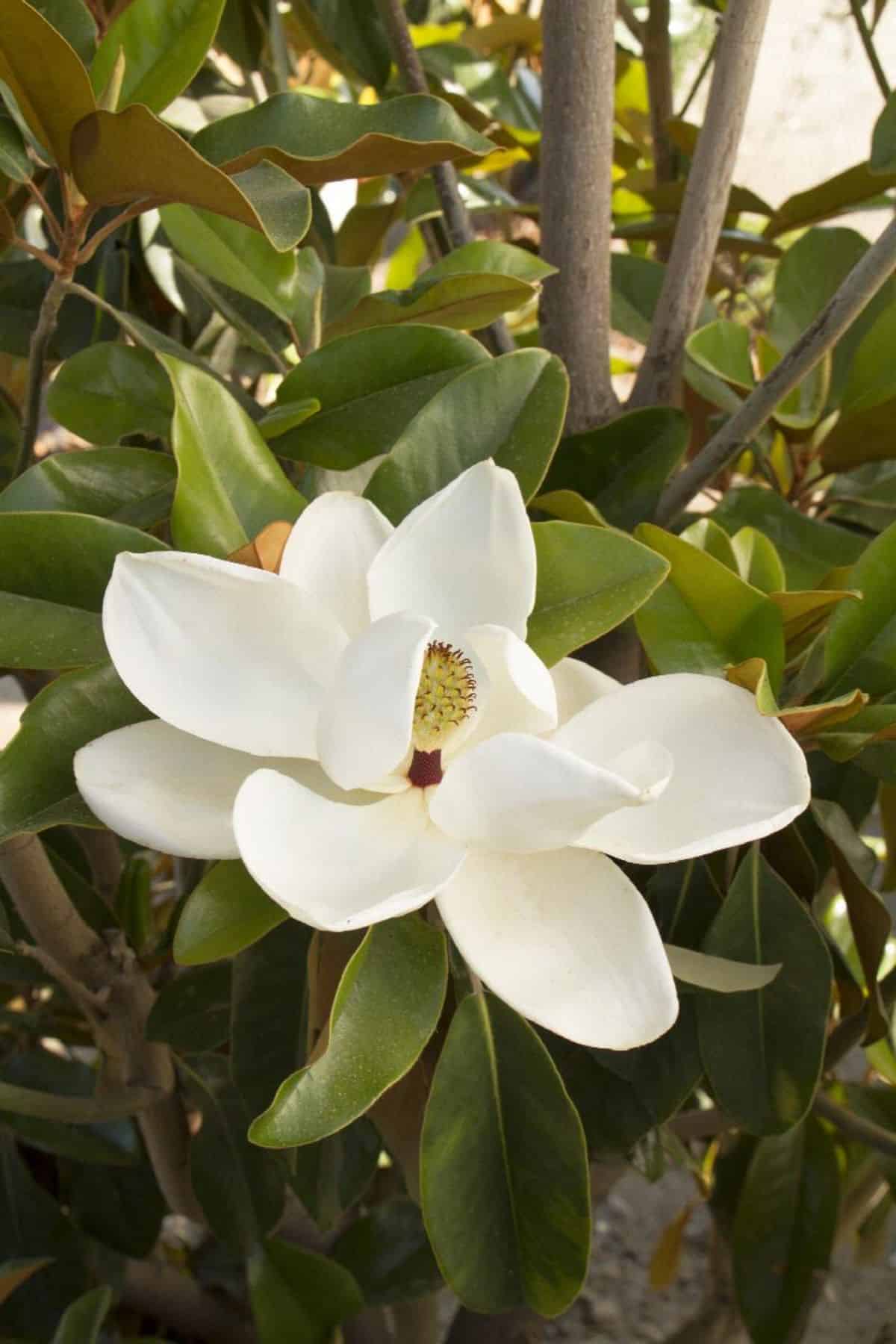
Another common white magnolia variety on our top list is Saint Mary. Also called Star Magnolia, this unique plant produces signature sweet-smelling blooms that can halt traffic and cause you to choose magnolias for every corner of your home. It is also a specie of the Southern Magnolia that gives the garden a tropical and dramatic feel.
Meanwhile, these plants are as versatile as they are gorgeous, making it easy to find that ideal for your growing conditions. The Saint Mary variety can reach up to 20 to 25 feet tall and spread and is hardy in zones 7 to 9 in full sun to partial shade conditions.
4. Cucumber Magnolia (Magnolia acuminata)
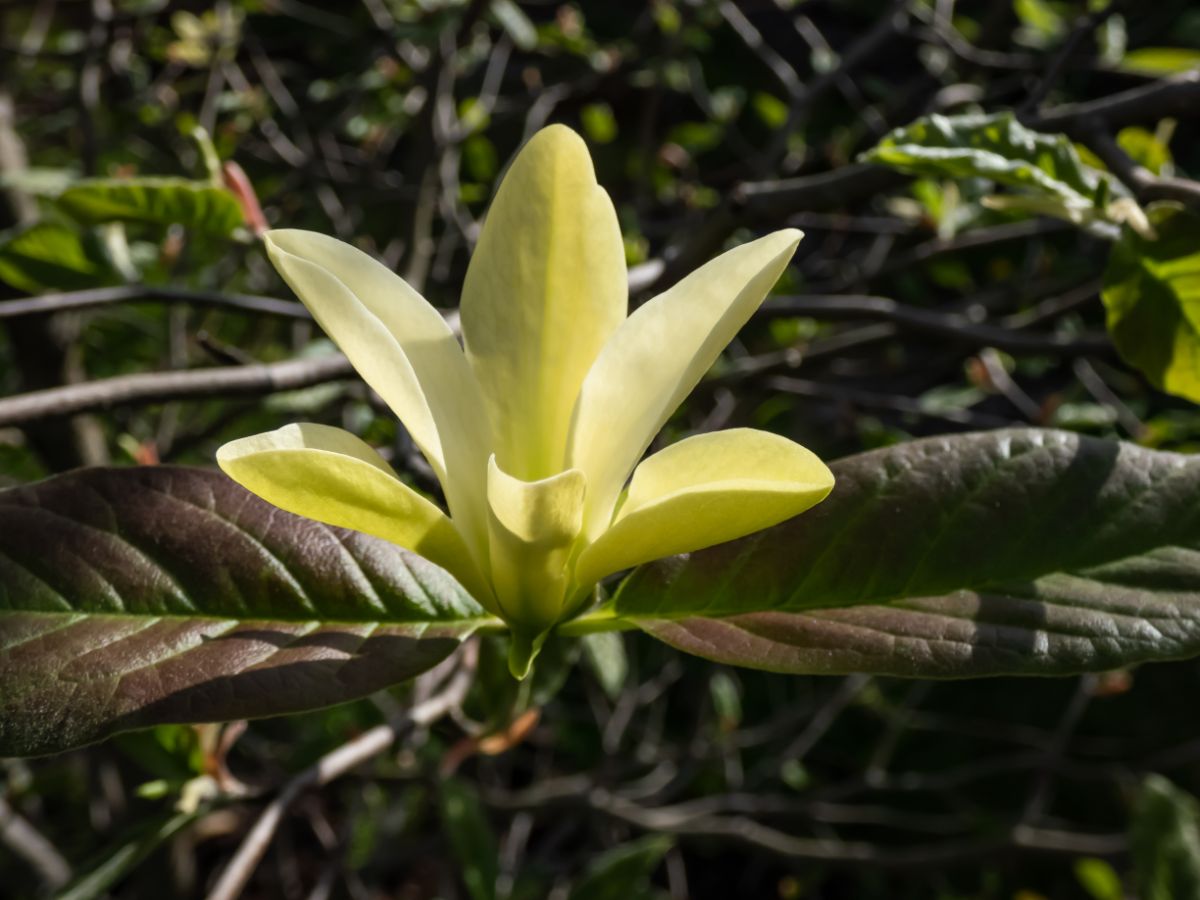
The cucumber magnolia is a deciduous variety with a pyramidal shape. However, with time, this shape gets more rounded when the tree reaches its mature height of 70 feet.
The magnolia acuminata thrives in medium to high moist soil content and grows along rivers and woodlands in its native Eastern United States.
Even though the cucumber magnolia can tolerate moist soils, please don't allow them to be soggy or extremely dry. Again, only grow this tree in clean areas to avoid destroying it.
This variety has greenish-yellow blooms and dark green leaves and has a single straight trunk. In zones 3 to 8, the plant can reach 40 to 70 feet high and 20 to 35 feet spread.
5. Bigleaf Magnolia (Magnolia macrophylla)
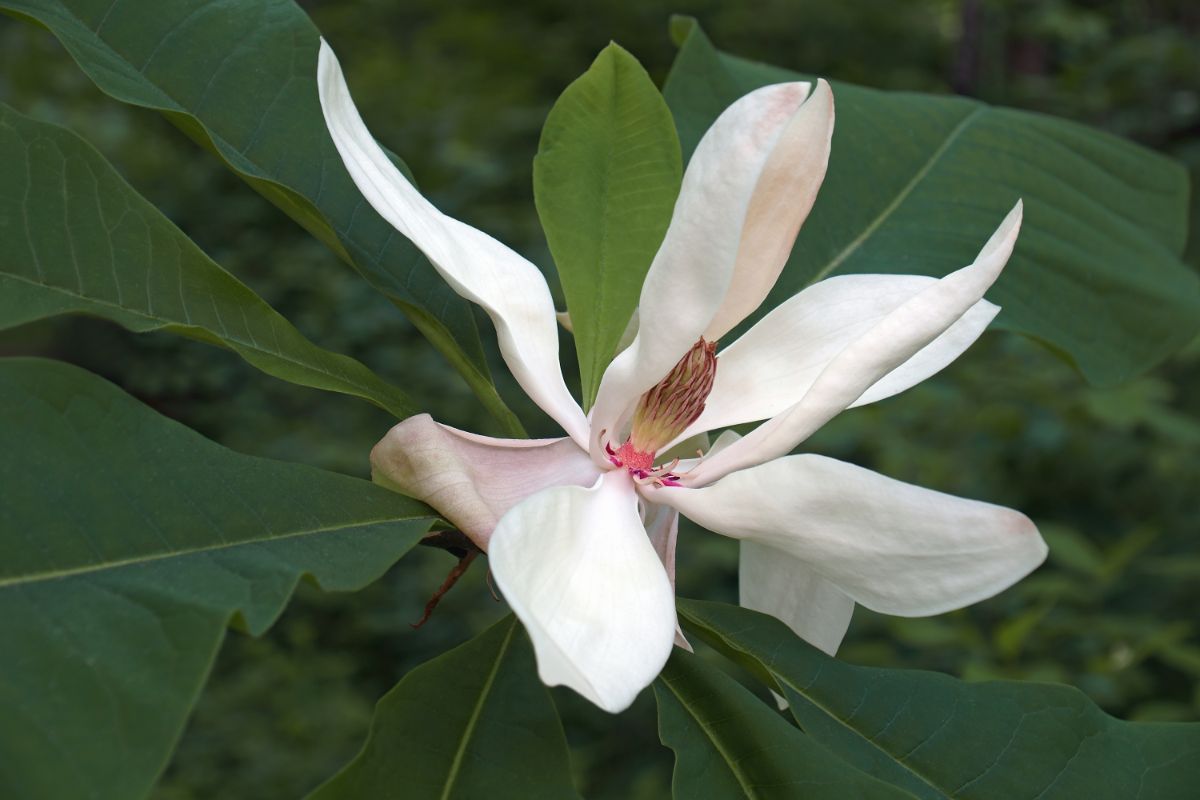
Bigleaf magnolia features the enormous simple leaves of any native plant from North America. It is a deciduous species that can grow up to 30 inches long with a big flower and mostly comes in white with a purple shade underneath each petal.
The flowers come with red and egg-shaped fruits that mature in late summer. Given that the blooms and fruits are very high on the tall tree, you can hardly see them.
Bigleaf magnolia thrives in moist acidic soils far from any pollution. Hardy in zones 5 to 8, this sun-loving tree can grow up to 30 to 40 feet tall.
6. 'Centennial Blush' Star Magnolia (Magnolia stellata)
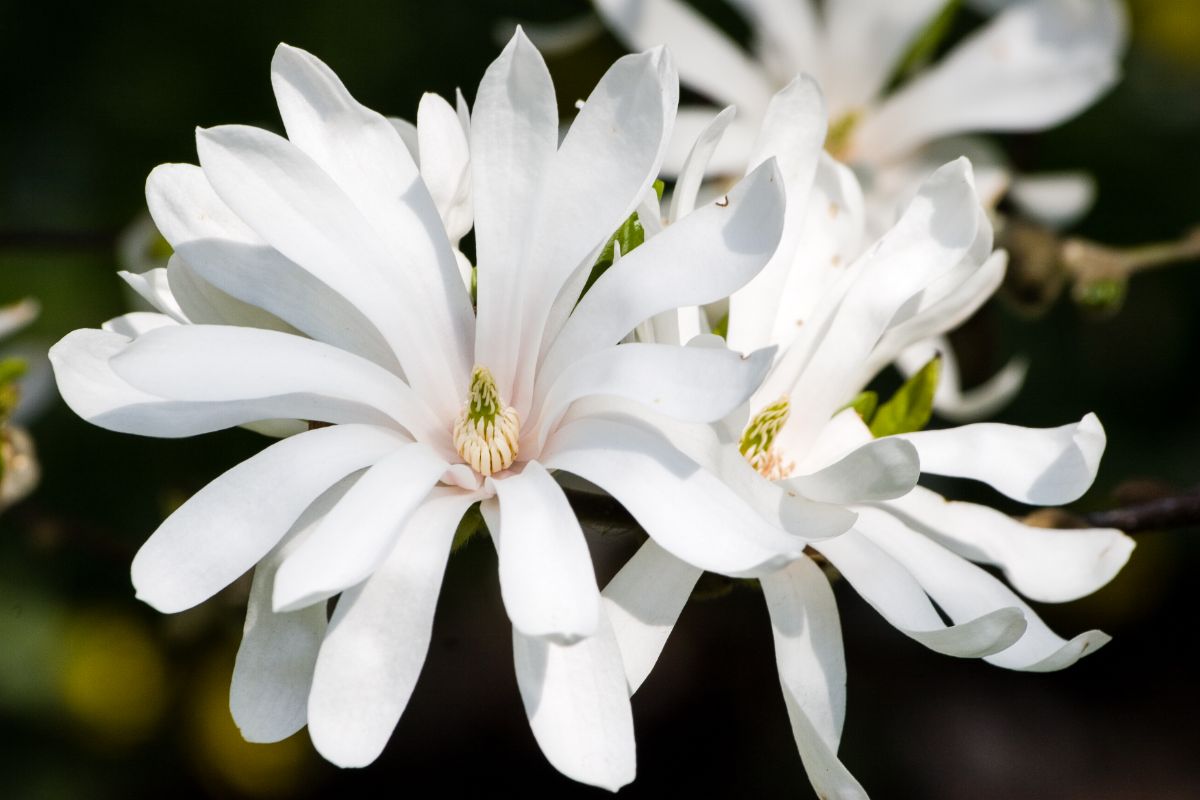
This centennial blush is another white variety that starts flowering in early spring when its initial daffodils are just beginning to display color. This plant unveils fragrance-filled white to pale pink blooms that unfurl before leaves, thus producing a stunning display. It thrives in full sun to partial shade conditions.
You can feed this star magnolia during the spring season with a slow-release shrub and tree fertilizer alongside sulfur or iron to enhance its leaves' greenery. Meanwhile, it can reach about 12 to 18 feet tall and 10 to 15 feet wide and is hardy in zones 4 to 9.
7. Baby Grand (magnolia grandiflora ‘Strgra’)
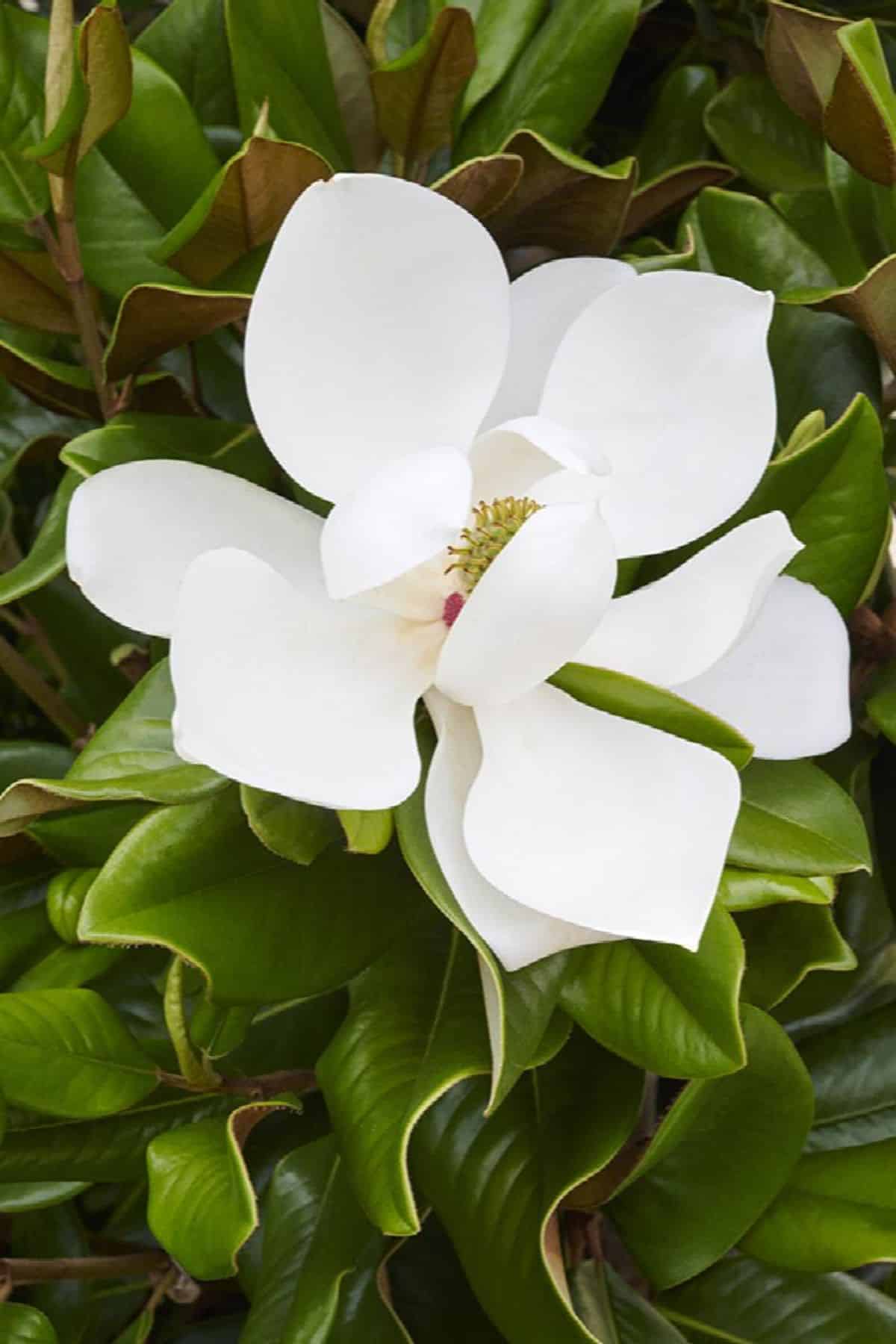
Baby Grand, commonly called, is an evergreen dwarf variety of magnolia specie that comes with stunning creamy white blooms and a lovely scent. Native to Australia, this unique plant is an excellent privacy hedge or small tree and is a perfect choice for growers with small spaces.
Magnolia grandiflora 'Strgra' unveils its buds in late spring to display incredible scent and creamy white flowers.
It's sweet-smelling large, lemon flowers feature delicately tapered inner petals and a giant yellow carpel with a showy pink base, standing out against its white petals. Hardy in zones 7 to 11, this sun-loving species can reach 10 feet tall and 7 feet wide.
8. Chinese magnolia (Magnolia soulangeana)
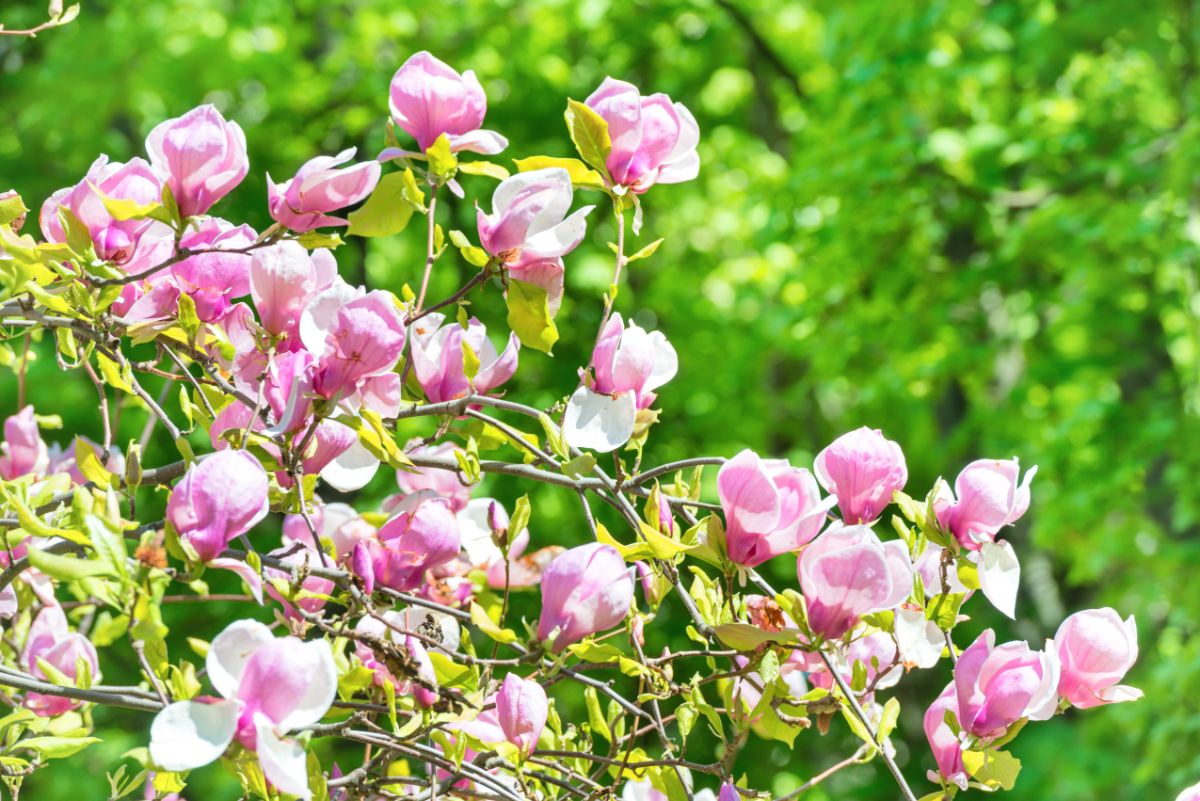
Chinese magnolia is a trendy and uniquely trailing tree that produces lots of white and pink colored blooms during early to mid-spring. These flowers are not just gorgeous but smell fabulous. It blooms on bare branches during early spring before growing leaves.
In zones 6 to 9, the Chinese magnolia is a sun-loving plant that prefers moist, well-drained soil and attracts pollinators like birds and butterflies.
9. Sweetbay Magnolia (Magnolia virginiana)
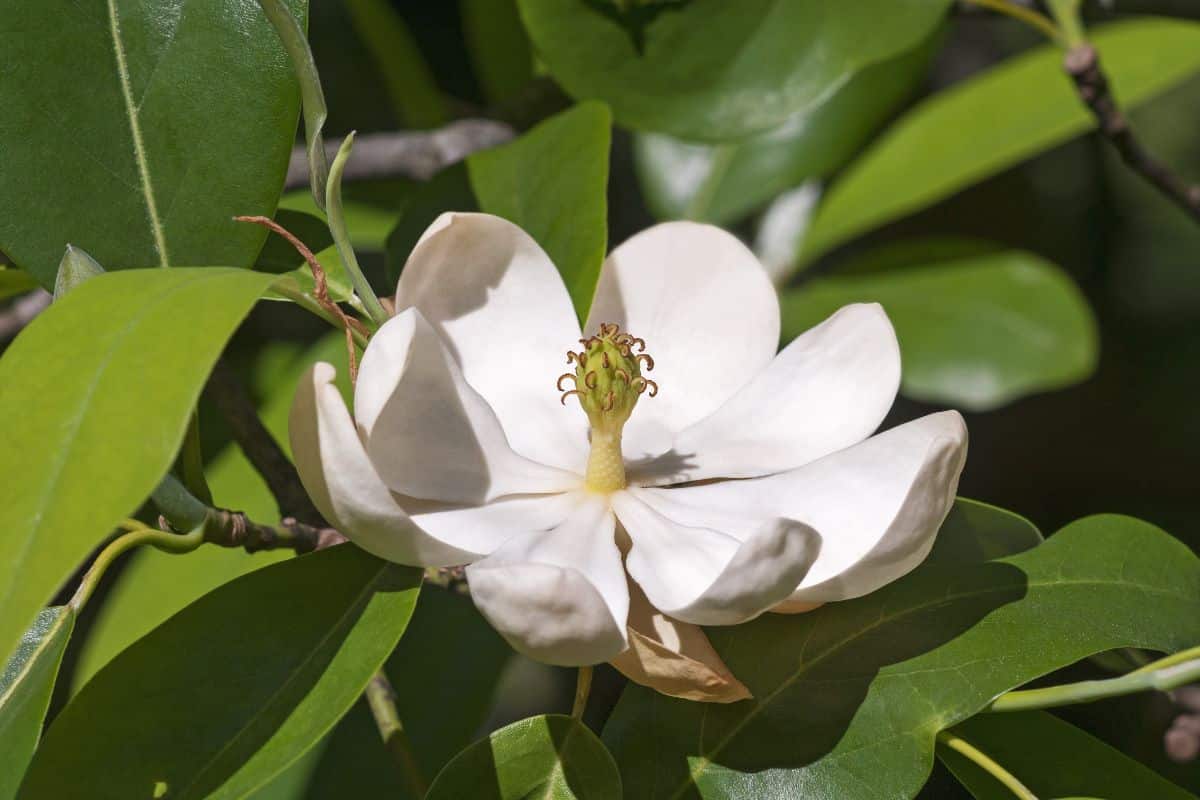
Sweetbay magnolia is a gorgeous dense shade tree that produces heavily creamy white blooms in late summer to early spring. It is among the most pest-resistant magnolia varieties and can survive in moist soils or even sitting water.
In zones 5 to 10, the Magnolia virginiana loves the sun and can reach 30 to 50 feet tall, while its canopy is around 20 to 25 feet.
10. Kobus Magnolia (Magnolia Kobus)
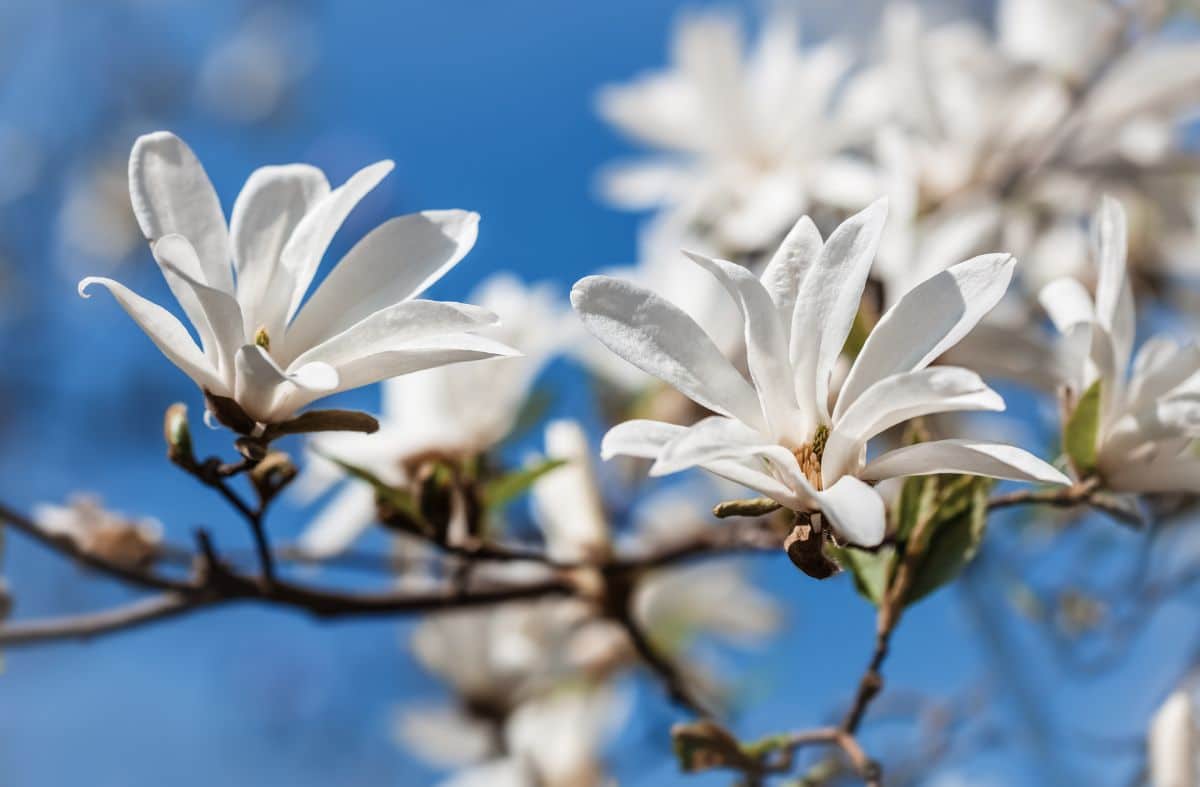
Native to the forest of Japan, the Kobus magnolia is a stunning variety that features a small to medium growth rate, growing slowly to about 25 to 30 feet tall and spreading over time.
It blooms best in late winter to early spring, producing fragrant, pink-tinged, white blooms that unveil in march before growing leaves. In zones 5 to 8, the Kobus thrives in moist, organically rich, well-drained soil in full sun to partial shade.
11. Colossus (Magnolia sieboldii ‘Colossus’)
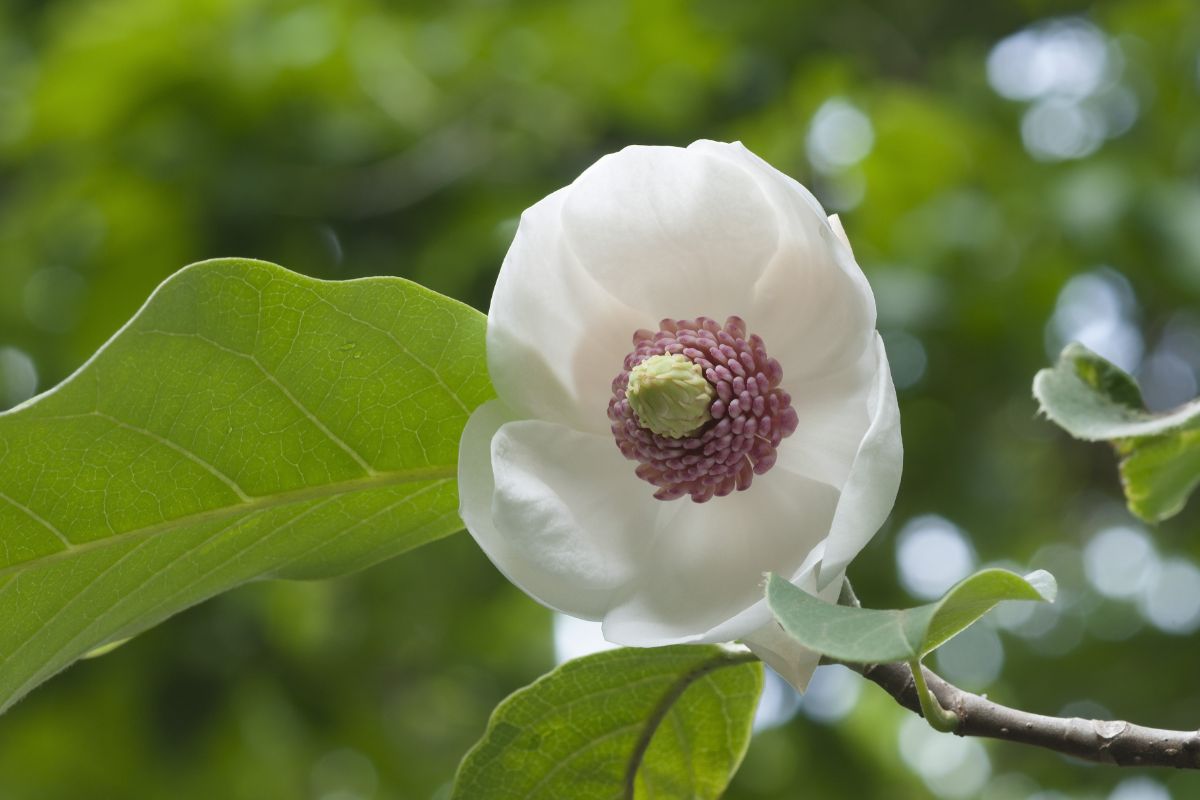
From its name, you will think the colossus is a giant plant, but it is a small to a mid-size tree that is very heat tolerant and thrives in full sun.
It is a slow grower and spreads naturally toward the latter years of maturity. Also called Oyama magnolia, the colossus requires a little shade during hotter months and flowers from spring to summer.
Native to China and Japan, the Magnolia sieboldii produces 4 feet flowers that are sweetly scented and feature white petals and crimson stamens with a lovely visual appeal.
Hardy in zones 6 to 9, this unique plant can reach up to 15 to 20 feet tall and wide and is a deciduous plant that turns yellow in the fall.
12. Southern magnolia 'Mainland.'
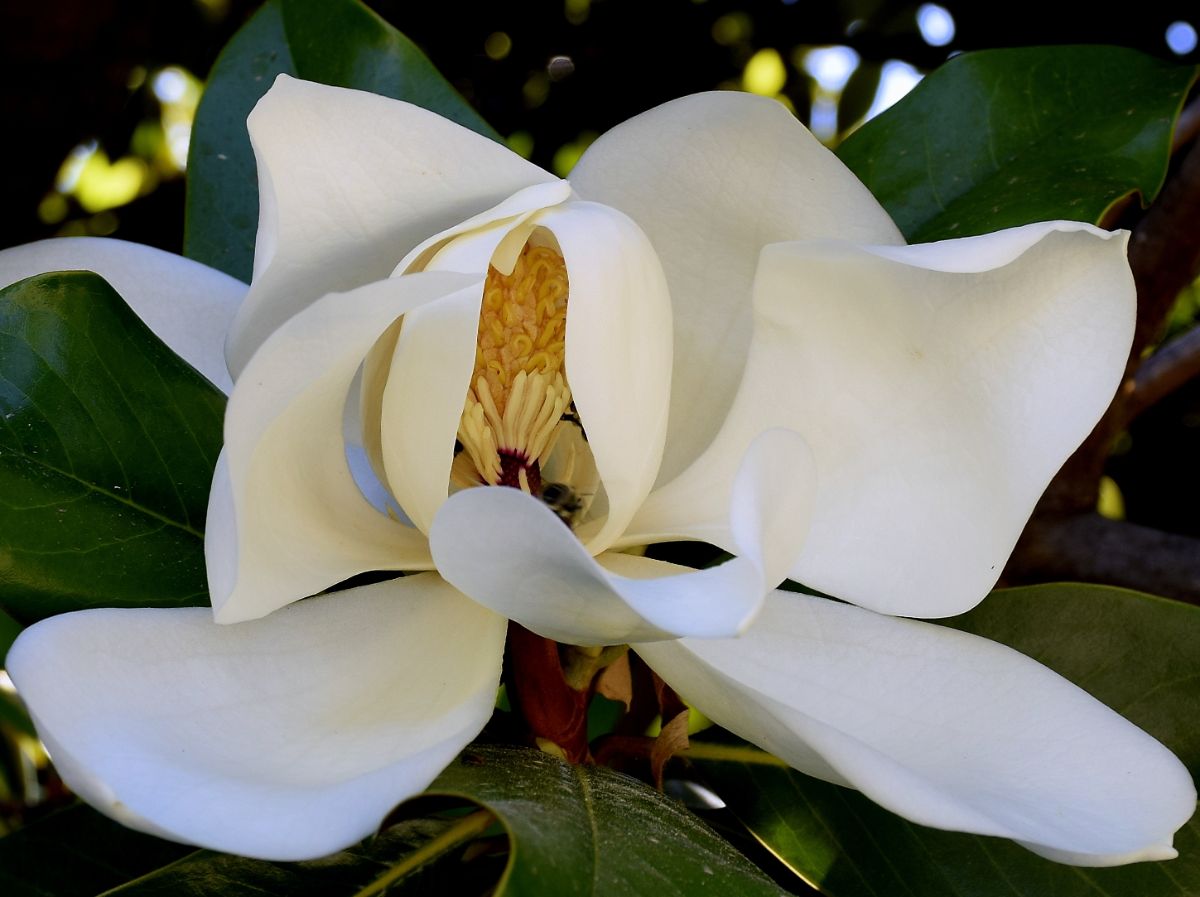
The mainland magnolia white variety is primarily purchased as Timeless Beauty magnolia featuring classic white magnolia flowers that grow over an extended season.
Its flowers ooze scent fumes sweetly and combine excellently with glossy evergreen leaves. The tree grows in an upright form with dense branches.
If you are looking for a perfect accent tree for a tight space, the mainland variety is ideal. It thrives in full sun to partial shade conditions and offers mulch over the root zone to preserve soil moisture. In zones 6 to 9, this tree can reach 15 to 20 feet tall and 20 to 25 feet wide.
13. 'Royal Star' White Magnolia
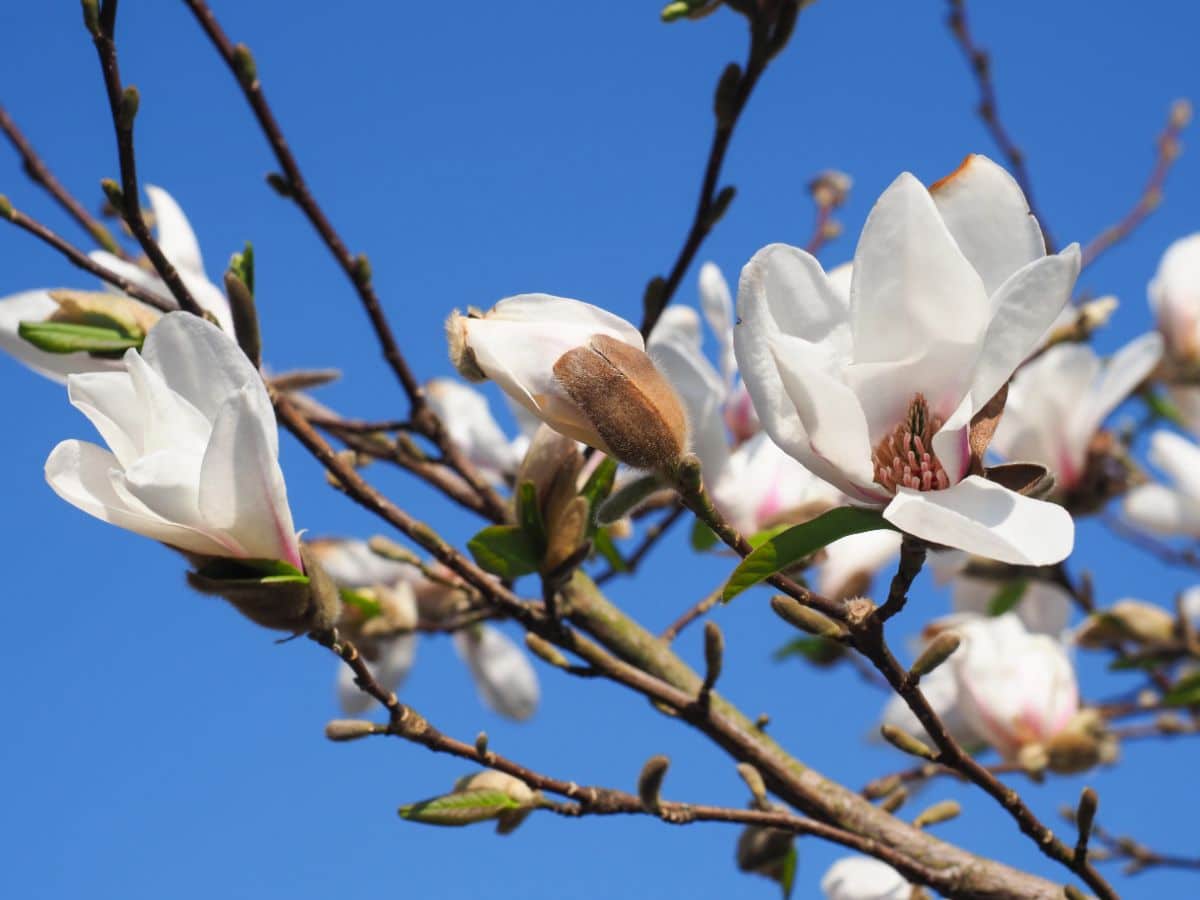
Royal Star magnolia variety produces beautiful flowers in early spring, and like most others, it unveils blooms before forming leaves on branches.
It also thrives in full sun spots and avoids growing early flowering types in a southern climate. In zones 4 to 8, the royal star is a small variety that reaches 10 to 20 feet tall, and 12 to 15 feet spread.
14. Cylindrical Magnolia (Magnolia cylindrica)
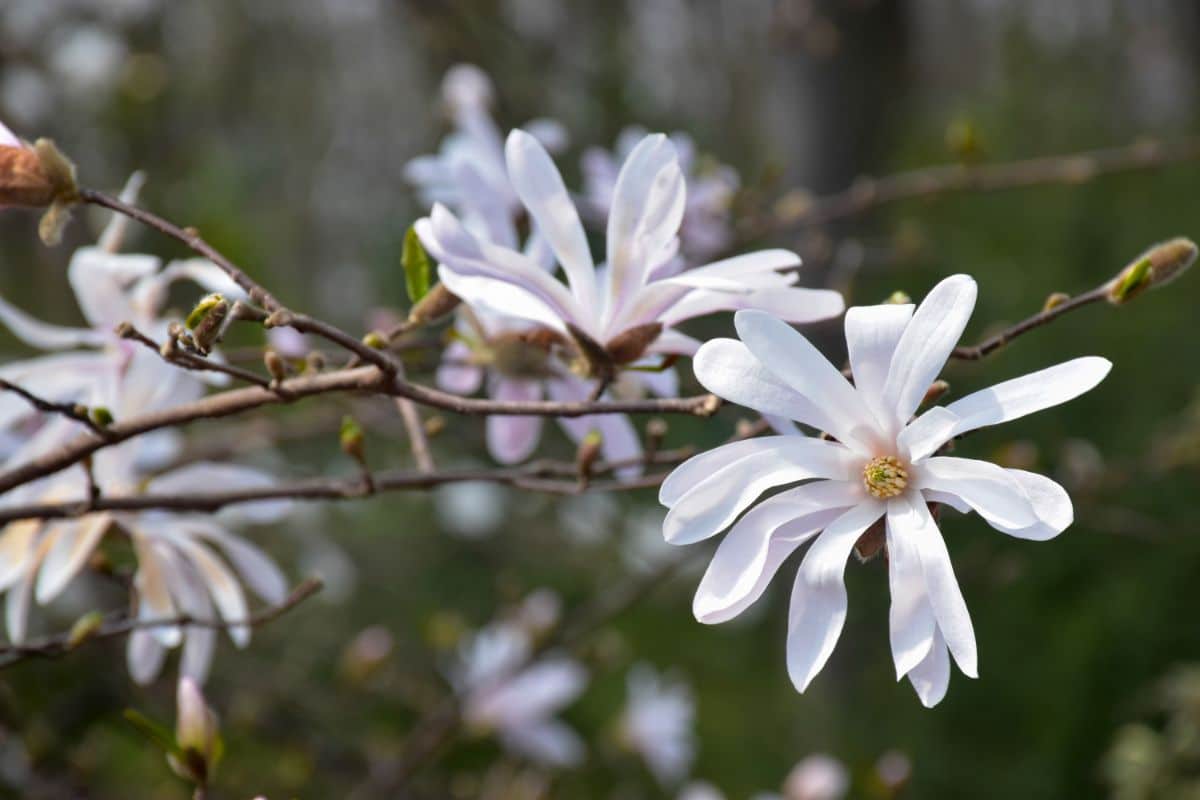
Cylindrical magnolia features a narrow vase-like form that grows up to 30 feet tall and 18 feet wide and prefers slightly acidic, moist soil.
When flowering, the blooms produce nine large petals with a three-pointed shape. In its growth season, the white color fades to pink on some areas of the petals.
Native to China, the Magnolia cylindrica blooms from April to May and provides a healthy layer of mulch to maintain consistent soil moisture.
It will thrive in full sun to partial shade conditions. However, it would help if you tried to avoid southern exposure to prevent premature flowers that will die in a late-season frost.
15. Fairy Magnolia White
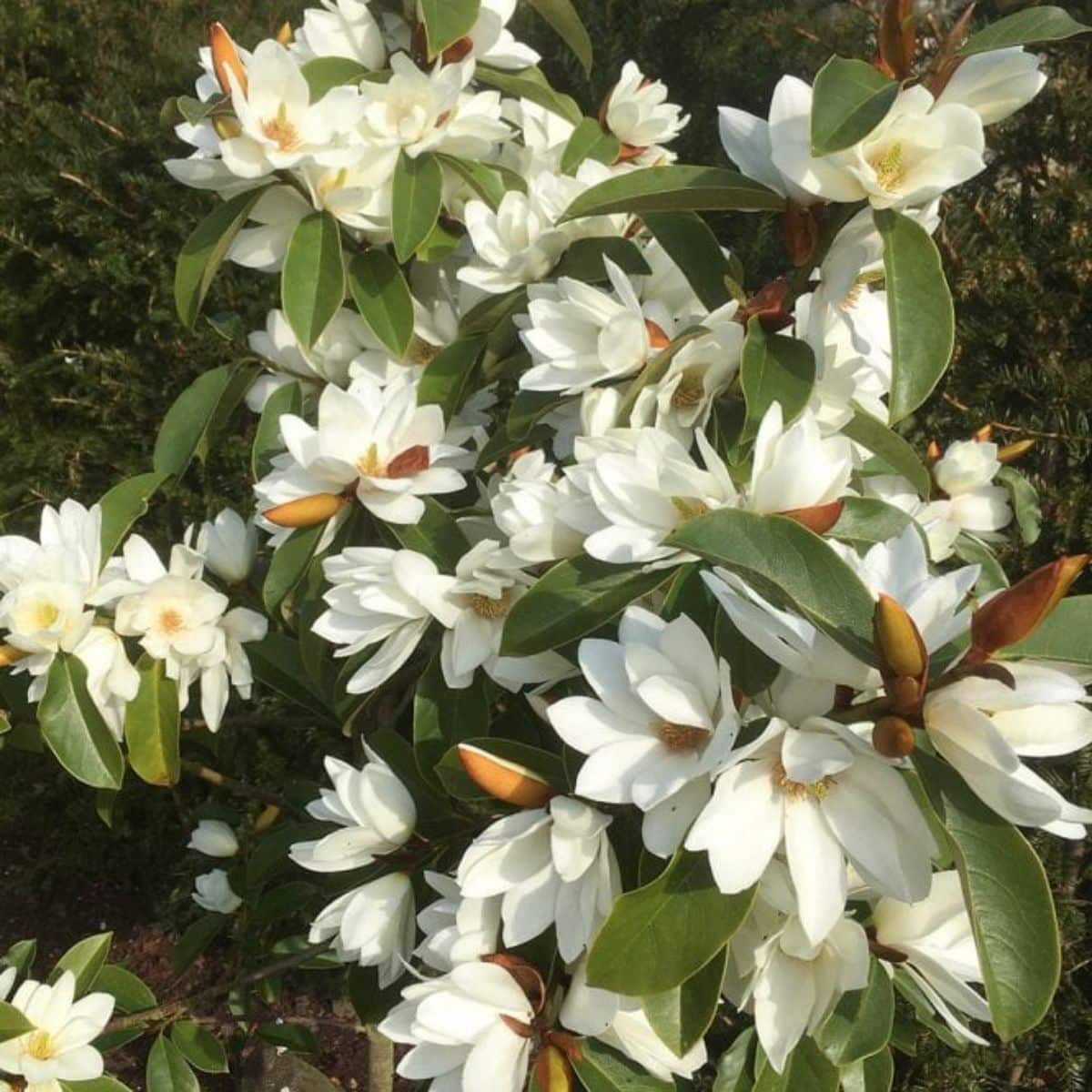
If you are looking for a perfect white magnolia variety to add to your landscape, look no further than Fairy Magnolia White, popularly called a magnolia cousin. This plant blooms heaviest from early to late spring and unveils fragrant blooms along stems covered with glossy evergreen leaves.
Even though the plant features a naturally compact, bushy nature, fairy magnolia white can also be grown as a small tree when you remove its lower branches.
It thrives in full sun or partial shade and well-drained soil. You can use this unique plant as a showstopper in your landscape. In zones 7 to 11, this plant can reach 9 to 12 feet tall and 5 to 7 feet spread.
16. Gail's Favorite (Magnolia laevifolia 'Gail's Favorite')
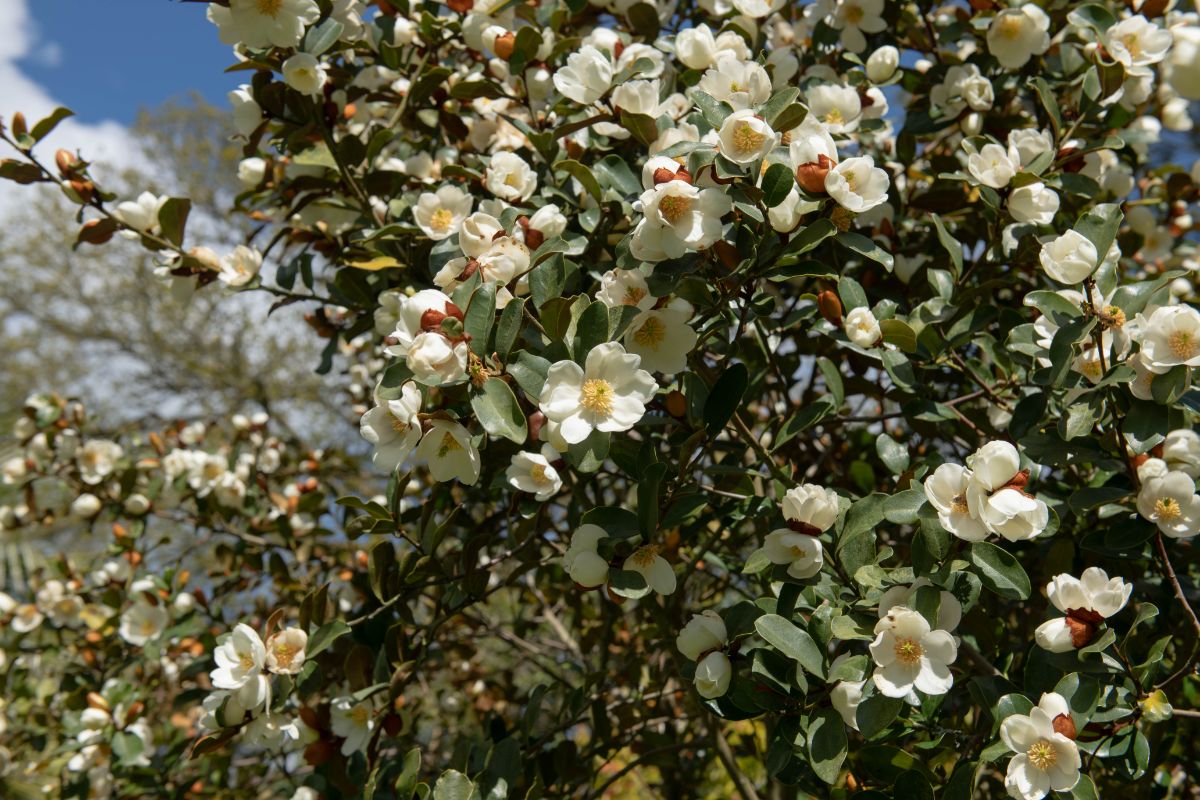
Gail's favorite is an evergreen shrub that grows leathery leaves and fragrant white blooms. It is a Chinese native plant that is hardy and evergreen featuring classic magnolia leaves.
The plant tends to age quickly and is suitable for city and country gardens and those who want a traditional magnolia display.
In zones 8 to 11, the Magnolia laevifolia flowers are scented, chalice-shaped, and white-colored. When its flower is fully opened, it displays a green carpel and light-yellow stamens and grows many of these flowers that unveil from velvety brown buds.
It blooms best in the early summer, thrives in full sun, and can reach 10 feet tall and 4 feet wide.
17. Anise Magnolia (Magnolia salicifolia)

Also known as the willow-leaved magnolia, the anise magnolia is a medium-sized deciduous tree producing white blooms in early spring. It features a lemony or anise flavor that has greyish bark.
The flowers display in the spring, followed by the leaves, making them prone to late frosts. In zones 6 to 9, this plant thrives in moist, well-drained soil and does best in full to partial sun.
18. Loebner Magnolia (Magnolia loebneri)
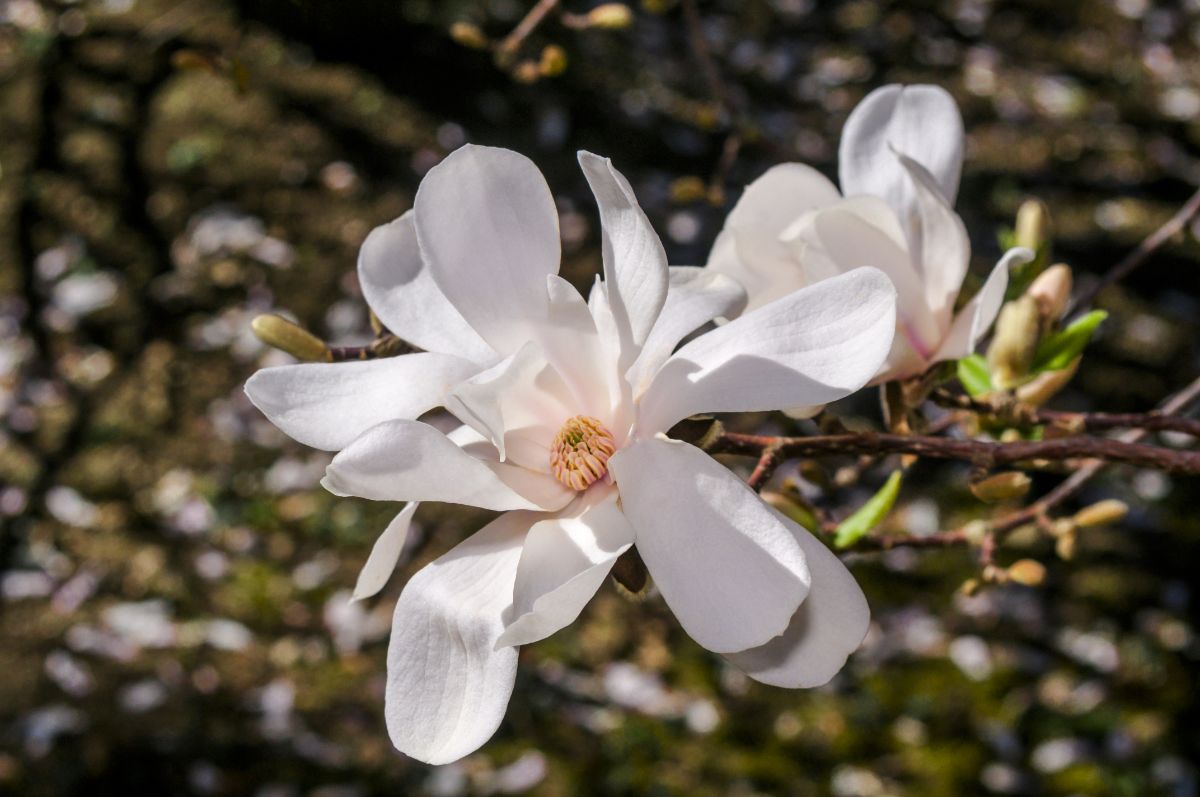
Loebner magnolia is a hybrid magnolia and is usually a product of a cross between a star magnolia and a Kobus magnolia. It is a hardy plant with white and pinkish blooms, reaching around 20 to 30 feet tall and spreading.
It can survive every soil except sandy ones. Hardy in zones 6 to 9, this plant thrives in full sun spots and is perfect as a sidewalk or specimen plant.
Conclusion
One common feature among all white magnolia varieties is that they both do best in full sun conditions, even though they can survive partial shade.
Most are also beautiful flowering species that can add color to any space, as long as you provide it with the right growing conditions.




